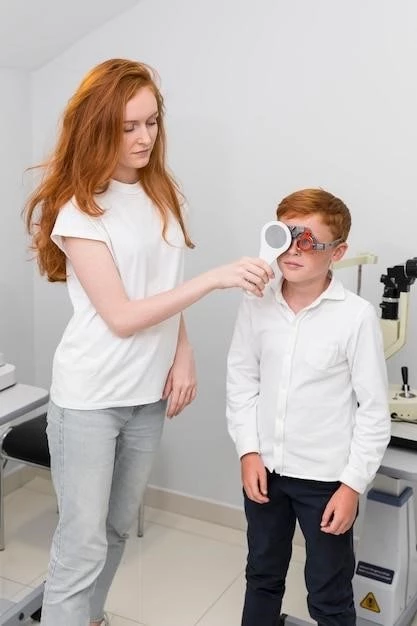Disease⁚ White Matter Hypoplasia Corpus Callosum Agenesis Mental Retardation
White matter hypoplasia-corpus callosum agenesis-intellectual disability syndrome is a very rare neurological condition characterized by brain anomalies, facial abnormalities, severe intellectual disability, and lack of muscle tone.
Disease Overview
White matter hypoplasia-corpus callosum agenesis-intellectual disability syndrome is a very rare neurological condition characterized by brain anomalies, facial abnormalities, severe intellectual disability, and lack of muscle tone. It affects the corpus callosum, a crucial structure connecting the brain hemispheres, leading to developmental abnormalities and notable familial cases. Diagnostic procedures involve advanced imaging techniques to identify specific brain anomalies. The prognosis and treatment plan vary depending on the severity of clinical findings, with a focus on managing symptoms and providing support for individuals and families dealing with this complex genetic syndrome.
Corpus Callosum Agenesis
Agenesis of the corpus callosum (ACC) is a rare birth defect characterized by complete or partial absence of the corpus callosum, the band of white matter connecting the brain hemispheres. This condition disrupts the development of the corpus callosum in the embryo, resulting in brain anomalies. ACC can lead to a range of neurological conditions, including familial cases with severe cerebral white matter hypoplasia, mental retardation, and facial abnormalities. Diagnostic procedures are crucial for identifying corpus callosum abnormalities, which may vary from thinning to complete agenesis, highlighting the need for specialized imaging techniques. Familial cases of ACC provide insight into the genetic underpinnings of this complex syndrome, emphasizing the importance of early detection and comprehensive care for individuals affected by corpus callosum agenesis.
White Matter Hypoplasia
White matter hypoplasia is a condition characterized by underdevelopment of the white matter in the brain. When associated with corpus callosum agenesis and intellectual disability, it leads to a rare neurological syndrome. This syndrome presents with distinct facial abnormalities, severe intellectual disability, and failure to thrive, highlighting the complexities of brain development. Diagnostic procedures play a crucial role in identifying the extent of white matter abnormalities and guiding treatment strategies for individuals with this condition. Understanding the genetic and environmental factors influencing white matter hypoplasia is essential for providing comprehensive care and support for affected individuals and their families.
Neurological Condition
The neurological condition characterized by white matter hypoplasia, corpus callosum agenesis, and mental retardation is a complex genetic syndrome affecting brain development. This syndrome presents distinct facial abnormalities, severe intellectual disability, failure to thrive, and lack of muscle tone. Diagnostic procedures focus on identifying brain anomalies, including thinning or complete absence of the corpus callosum. The prevalence of mental retardation suggests that hypoplasia of the corpus callosum is a significant indicator of cerebral dysgenesis. Understanding the genetic factors contributing to this condition is crucial for tailored treatment and support for affected individuals and their families.
Genetic Syndrome
White matter hypoplasia-corpus callosum agenesis-intellectual disability syndrome is a rare genetic condition characterized by severe cerebral white matter hypoplasia, extreme hypoplasia or agenesis of the corpus callosum, mental retardation, failure to thrive, and minor midline facial abnormalities. This distinctive syndrome presents a complex array of symptoms, highlighting the intricate interplay of genetic factors influencing brain development. Understanding the genetic basis of this syndrome is critical for accurate diagnosis and tailored treatment strategies to support individuals and families affected by this rare genetic disorder.
Brain Anomalies
The neurological condition of white matter hypoplasia-corpus callosum agenesis-intellectual disability syndrome is marked by specific brain anomalies. This includes abnormal development of the corpus callosum, the white matter structure responsible for connecting the brain hemispheres. Cases involving thinning or absence of the corpus callosum can result in various cerebral dysgenesis markers, such as severe white matter hypoplasia, mental retardation, and midline facial differences. Understanding these brain anomalies through comprehensive imaging and diagnostic procedures is crucial for effective management and support strategies tailored to individuals facing this rare genetic syndrome.
Facial Abnormalities
Individuals affected by the rare genetic syndrome of white matter hypoplasia-corpus callosum agenesis-intellectual disability exhibit notable facial abnormalities. These include a distinct facial appearance with features such as a broad nasal root, widely spaced eyes (hypertelorism), and a very small chin (micrognathia). The presence of these facial characteristics alongside brain anomalies, severe intellectual disability, and failure to thrive underscores the unique presentation of this complex genetic syndrome.
Failure to Thrive
Individuals with the genetic syndrome of white matter hypoplasia-corpus callosum agenesis-intellectual disability often experience failure to thrive, a condition characterized by inadequate weight gain or overall growth below expected levels. This failure to thrive may result from underlying complexities such as neurological abnormalities, facial differences, severe intellectual disability, and muscle tone issues. Understanding and addressing the factors contributing to failure to thrive in individuals with this syndrome are crucial for providing comprehensive care and support tailored to their specific needs.
Severe Intellectual Disability
Individuals diagnosed with the genetic syndrome of white matter hypoplasia-corpus callosum agenesis-intellectual disability often present with severe intellectual disability. This profound impairment in cognitive and adaptive functioning can manifest alongside other neurological symptoms, including brain anomalies, facial abnormalities, and failure to thrive. The presence of such severe intellectual disability underscores the complex nature of this rare genetic syndrome, necessitating specialized care and support tailored to the individual’s unique needs.
Lack of Muscle Tone
The genetic syndrome of white matter hypoplasia-corpus callosum agenesis-intellectual disability is often associated with a lack of muscle tone, medically known as hypotonia. Individuals affected by this syndrome may display reduced muscle strength and control, contributing to challenges in mobility and coordination. The presence of hypotonia, along with other neurological and developmental abnormalities, underscores the complexity of this condition and the need for tailored interventions to address the unique needs of individuals experiencing muscle tone issues.
Clinical Findings
Clinical findings associated with white matter hypoplasia-corpus callosum agenesis-intellectual disability syndrome include notable brain anomalies, facial abnormalities such as broad nasal root, widely spaced eyes (hypertelorism), and a very small chin (micrognathia), failure to thrive, severe intellectual disability, and lack of muscle tone. These clinical manifestations reveal the complexity of this genetic syndrome and emphasize the importance of comprehensive diagnostic evaluations to guide individualized treatment and support plans.
Developmental Abnormalities
The genetic syndrome of white matter hypoplasia-corpus callosum agenesis-intellectual disability presents significant developmental abnormalities. These include severe cerebral white matter hypoplasia, agenesis or extreme hypoplasia of the corpus callosum, mental retardation, failure to thrive, and minor midline facial differences. The combination of these developmental challenges underscores the complexity of this rare genetic syndrome, emphasizing the need for specialized care and support tailored to address the unique developmental needs of affected individuals.
Familial Cases
Familial cases of individuals diagnosed with white matter hypoplasia-corpus callosum agenesis-intellectual disability syndrome have been reported, indicating a potential genetic basis for this rare neurological condition. Two pairs of male siblings from different families with the same syndrome were observed, exhibiting severe cerebral white matter hypoplasia, extreme hypoplasia or agenesis of the corpus callosum, mental retardation, failure to thrive, and minor midline facial abnormalities. This observation highlights the familial nature of the syndrome and suggests a genetic component underlying its manifestation.
Diagnostic Procedures

Diagnostic procedures for white matter hypoplasia-corpus callosum agenesis-intellectual disability syndrome involve various imaging techniques to assess brain anomalies. Specialized imaging methods, such as magnetic resonance imaging (MRI) and computed tomography (CT) scans, help identify structural abnormalities like thinning or absence of the corpus callosum. These procedures are essential for accurate diagnosis and treatment planning, allowing healthcare professionals to tailor interventions to address the specific needs of individuals with this rare genetic syndrome.
Prognosis and Treatment
For individuals with white matter hypoplasia-corpus callosum agenesis-intellectual disability syndrome, the prognosis and treatment depend on the severity of their condition. The presence of brain anomalies, facial abnormalities, severe intellectual disability, and lack of muscle tone necessitates a multidisciplinary approach to care. While there is no cure for this rare genetic syndrome, management focuses on symptom relief, supportive therapies, and interventions to enhance quality of life. Early diagnosis through specialized imaging techniques allows for personalized treatment plans that may involve physical therapy, speech therapy, educational support, and adaptive tools to address the unique needs of affected individuals.

